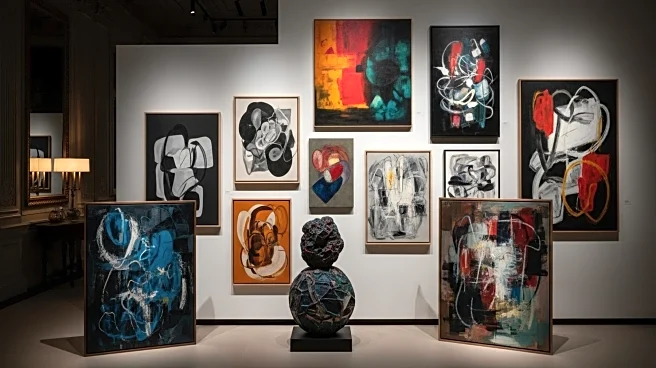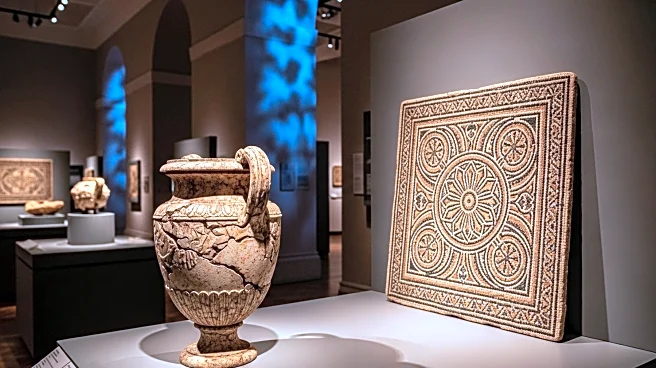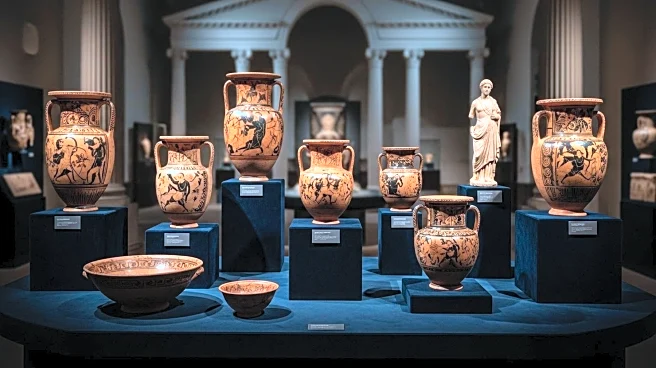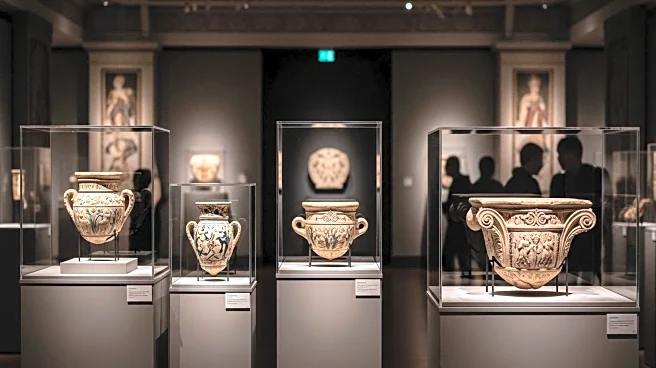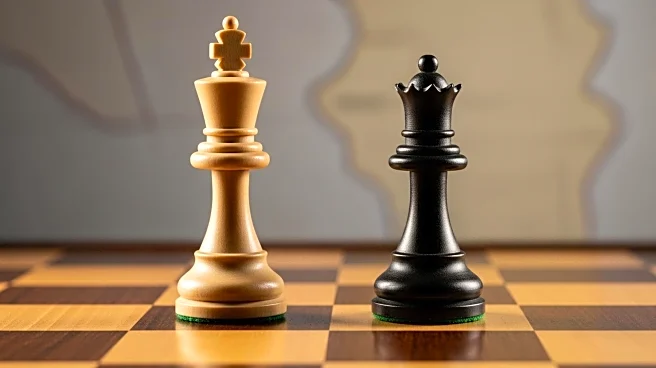What is the story about?
What's Happening?
The Manhattan District Attorney's office has been actively seizing antiquities from dealers, collectors, and museums, with around 6,000 objects confiscated since 2017. These actions have led to the repatriation of many items to their countries of origin, including India, Mexico, China, and Greece. Recently, the DA received a favorable ruling from the state's supreme court to seize the Egon Schiele drawing, Russian War Prisoner (1916), from the Art Institute of Chicago, which is currently appealing the decision. The DA's approach, which considers any artwork once stolen as perpetually stolen, disregards titles acquired in intermediary jurisdictions like Switzerland or England. This stance contrasts with other jurisdictions that honor foreign good faith purchases and limitation periods.
Why It's Important?
The DA's aggressive stance on art seizures in New York has significant implications for the art market. It challenges the legal rights of possessors and creates uncertainty around the ownership of artworks, potentially deterring dealers and collectors from bringing art to New York. The ruling against the Art Institute of Chicago, if upheld, could set a precedent that affects the movement and trade of art globally. This situation may lead to increased caution among art owners, who might require cast-iron provenance or immunity from seizure protection before sending works to New York, impacting the city's reputation as a major art hub.
What's Next?
The Art Institute of Chicago is appealing the court's decision regarding the Egon Schiele drawing. If the appeal is successful, it may provide relief to art possessors concerned about the DA's aggressive seizure tactics. However, if the ruling is upheld, it could reinforce the DA's approach and lead to further seizures, prompting art owners to reconsider New York as a destination for their collections. The outcome of this appeal will be closely watched by stakeholders in the art industry.
Beyond the Headlines
The DA's actions raise ethical and legal questions about the treatment of historical thefts and the rights of current possessors. The disregard for good faith acquisitions and elapsed time since acquisition challenges traditional notions of ownership and may lead to broader discussions on the ethics of art repatriation and the responsibilities of museums and collectors in verifying provenance.
AI Generated Content
Do you find this article useful?
